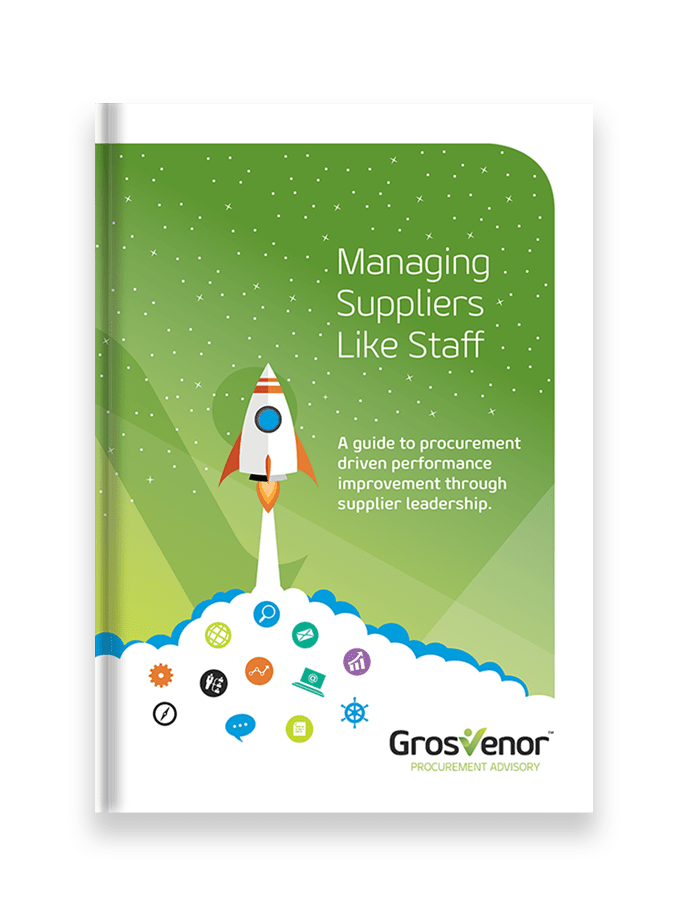Be SMART: How to define KPIs that drive better results

KPI for supplier contracts
Well thought out key performance indicators (KPIs) are a fundamental ingredient of performance management frameworks. But for many, developing a good KPI – one that actually drives behaviour to achieve results – is harder than it looks.
A well-known saying is ‘what gets measured, gets done’. This is particularly true in contract management. The contract’s KPIs drive supplier behaviour, so it’s important that they align with the contract’s objectives.
Good KPIs can reduce rework, complaints and risk – and encourage your supplier to focus on your contract’s strategic objectives. Here’s how to develop the right KPIs for your contract to drive better results and help align your supplier’s objectives to your business.
1. Identify your strategic objectives
It can be tempting to jump straight in to KPI writing, but it’s important to define the strategic objectives of your project first so that you know what your KPIs are trying to do.
Ask yourself what the contract is trying to achieve for the business. Your answer should be strategic, not tactical. So think more along the lines of ‘supporting IT strategy to upgrade desktops to new SOE standard’ than ‘successfully install desktop software’.
Next, break it down to a practical level by thinking about how to measure the achievement of your strategic goal. It can help to consider your goal using the following filters:
- cost
- operational performance
- risk
- achieving specific strategies or targets
- stakeholder accountability
- alignment with your organisational strategy.
2. Define SMART KPIs
Now that you’re clear on what you’re trying to achieve, you can define effective KPIs using the ‘SMART’ method.
Ask yourself the following questions:
Specific: How can I tie this in with the contract’s strategic goal?
Measurable: How will I know it’s been achieved?
Attainable: Is the target realistic and reasonable?
Results-oriented: Are you measuring outcomes (not inputs)?
Time based: Is there a definite deadline?
Make sure your KPIs include several key elements:
- output measure: what is being monitored
- data source: what will be used to track KPI performance and who is best placed to track it
- agreed frequency for capturing data: the period of time used for assessing performance
- rating system: how performance will be judged. This might be a pass/fail measure or assigning a rating.
3. Make sure KPIs are measurable
Of those five SMART questions, people often struggle with creating KPIs that are measurable. Remember, ‘what gets measured, gets done’. Measure is particularly important as it’s the element that will drive behaviour. Care should be taken when drafting the measure, to ensure that the supplier is able to influence the outcome of the KPI and that it drives excellent service delivery
What you measure will depend on what you are trying to achieve, but some useful yardsticks for measuring performance include:
- relative or comparative analysis
- benchmarking against comparable services or organisations
- change from previous period
- achieving specific targets.
The objective here is to create a measure that is binary – either it has been achieved or it hasn’t – leaving no room for interpretation or negotiation.
For example, if a contractor is delivering an IT support contract, a good measure might be the number of complaints closed on first contact, rather than the hours they spent on an issue, which doesn’t necessarily correspond to high levels of service.
Some examples of things that might be measured in a contract include:
- availability of systems or assets – application for the end user is available 99.999% of the year
- savings delivered by the supplier to deliver the contract – reduction of pass-through expenses by 5%
- lead-time to fulfil to requests – 95% of problems raised with the provider are resolved within 2 business days
- quality of order fulfilment – 99% of orders delivered on time, on quality and on cost
- customer Satisfaction – Net Promoter Score is above +20.
If at first you don’t succeed…
And don’t worry if you don’t get it right the first time. KPIs should be regularly tested and adjusted if they don’t drive the right behaviours or are not completely aligned with what you are trying to achieve.
While there is no right or wrong number of KPIs, a good rule of thumb is to aim for two to three KPIs for each Critical Success Factor but no more than 12 in total for each contract. If there are too many KPIs, your time and energy will be spent on measuring performance, rather than getting the performance up to scratch.









 We are all about sharing our expertise to help you and your organisation be the best it can be.
We are all about sharing our expertise to help you and your organisation be the best it can be.